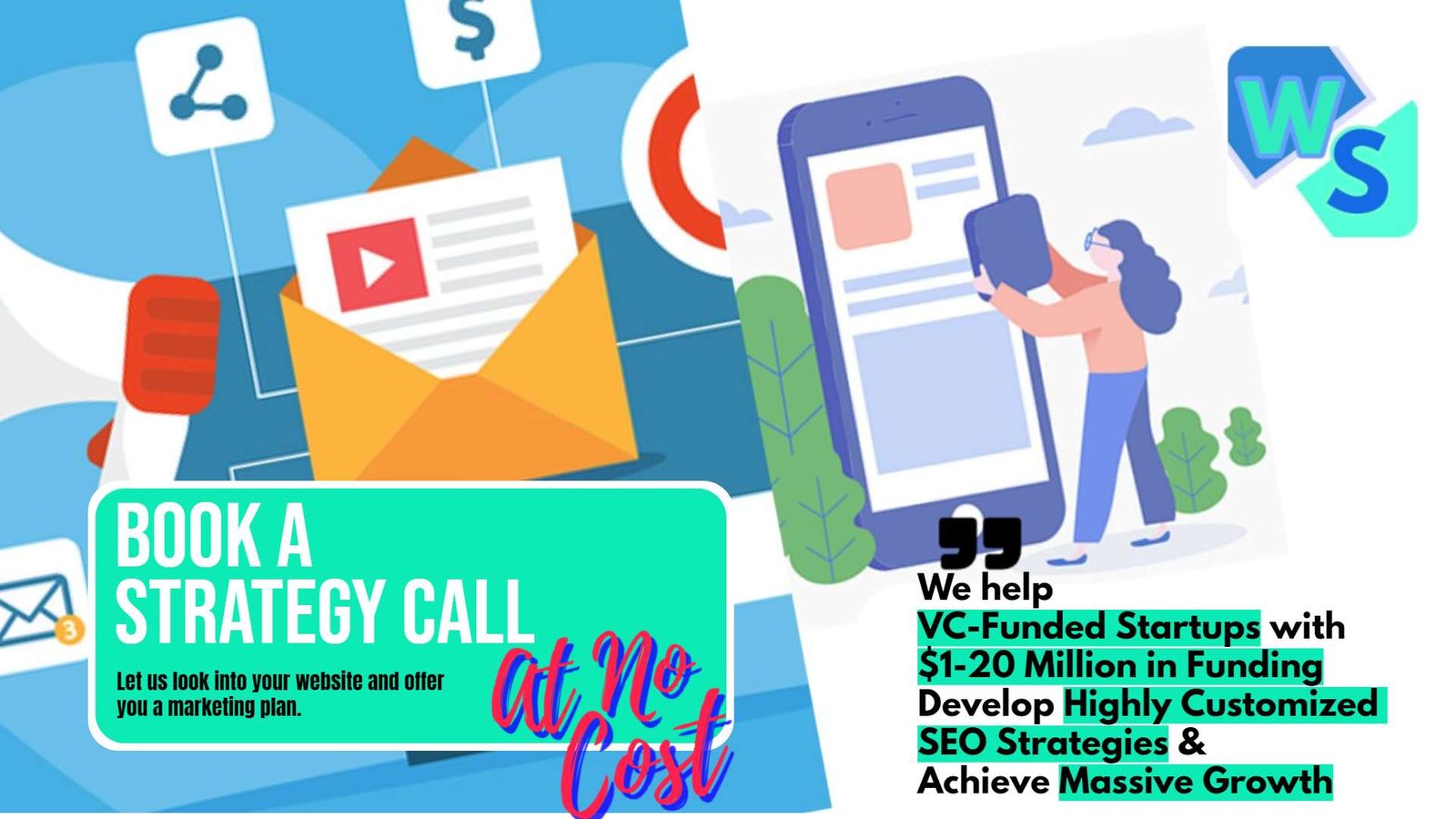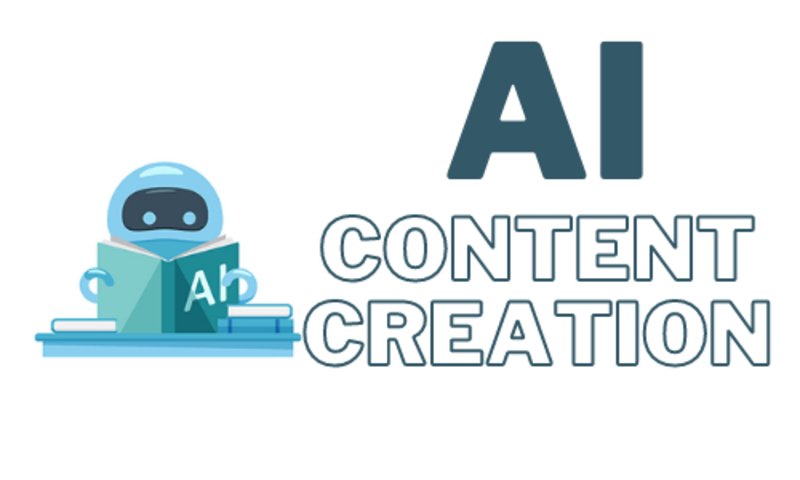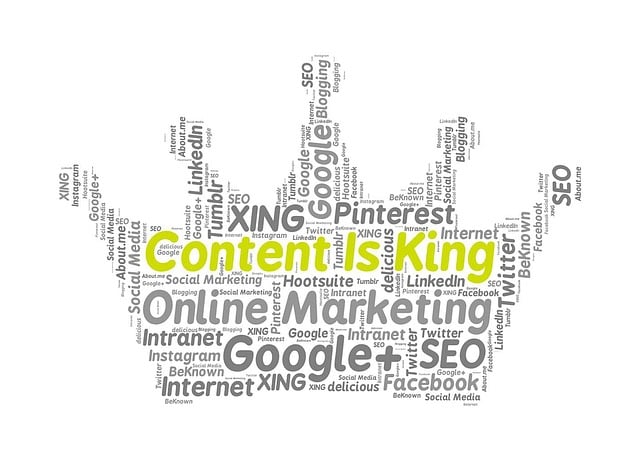This Article has been revised, edited and added to, by Poulomi Chakraborty.
In the ever-evolving world of content marketing, one question continues to spark debate: Should brands focus on long-form or short-form content? Both have their merits and can play crucial roles in a content strategy, but understanding which is right for your brand depends on your goals, audience, and the nature of your message.
Long-form content, typically defined as articles exceeding 1,000 words, delves deep into topics, providing comprehensive insights and detailed information. It’s the type of content that can position your brand as a thought leader, drive organic traffic through SEO, and engage readers seeking in-depth knowledge.
On the other hand, short-form content, usually under 1,000 words, is designed for quick consumption. It’s perfect for capturing the attention of readers with short attention spans, delivering concise information, and encouraging social shares and interactions.
Finding the right balance between these two forms is key to a successful content strategy. In this article, we’ll explore the strengths and weaknesses of long-form and short-form content, provide actionable insights on when to use each type, and help you determine the best approach for your brand.
Deep Dive into Long-Form Content

Benefits of Long-Form Content
Long-form content offers numerous benefits that can significantly enhance your content marketing efforts. One of its primary advantages is the ability to establish authority.
By thoroughly exploring a subject, you demonstrate expertise and knowledge, which builds trust with your audience. Readers are more likely to view your brand as a credible source of information.
SEO is another area where long-form content excels. Search engines favor comprehensive articles that cover topics in depth. These pieces are more likely to rank higher in search results, attracting organic traffic. Long-form content often includes a variety of keywords and related terms, which can enhance its visibility and relevance in search engine algorithms.
Moreover, long-form content tends to keep readers on your site longer. The more time they spend engaging with your content, the greater the opportunity to build a relationship with them. This increased engagement can lead to higher conversion rates as readers are more likely to take action after consuming detailed and valuable information.
Challenges of Long-Form Content
Despite its benefits, long-form content comes with challenges. Creating comprehensive articles requires significant time and resources. Researching, writing, and editing long pieces can be demanding, especially if you aim to maintain high-quality standards.
Another challenge is audience engagement. Not all readers have the time or patience to read lengthy articles. Some may prefer concise, easily digestible content. Therefore, it’s crucial to know your audience and ensure your long-form content aligns with their preferences.
Additionally, long-form content needs to be well-structured to keep readers engaged. Without clear headings, subheadings, and a logical flow, readers might lose interest. Effective formatting and a strong narrative are essential to maintaining engagement throughout the article.
When to Use Long-Form Content
Long-form content is particularly effective when you aim to provide in-depth knowledge or tackle complex subjects. It’s ideal for thought leadership pieces, comprehensive guides, whitepapers, and case studies. These formats allow you to delve into details, provide extensive research, and offer valuable insights.
Consider using long-form content when you want to improve your SEO performance. Comprehensive articles are more likely to be linked to by other sites, enhancing your backlink profile and search engine rankings. Additionally, they can serve as cornerstone content that supports other pieces on your site, creating a cohesive content strategy.
Long-form content is also suitable for nurturing leads and building relationships with your audience. By offering valuable information and addressing their pain points, you can guide readers through the buyer’s journey, increasing the likelihood of conversion.
Exploring Short-Form Content

Benefits of Short-Form Content
Short-form content has its own set of advantages that make it a valuable asset in any content marketing strategy. One of its primary strengths is its ability to capture and hold attention quickly.
In a world where readers are often pressed for time and inundated with information, short-form content offers a quick and efficient way to convey your message.
The brevity of short-form content makes it ideal for social sharing. Readers are more likely to share concise, impactful pieces with their networks, increasing your content’s reach and visibility. This type of content is perfect for social media platforms where users scroll through feeds rapidly and prefer quick bites of information.
Creating short-form content is generally less time-consuming than long-form content. This allows you to produce and publish content more frequently, keeping your audience engaged with a steady stream of updates. It also makes it easier to respond to current events or trends, ensuring your content remains relevant and timely.
Short-form content is versatile and can be used in various formats, including blog posts, social media updates, infographics, and videos. This flexibility enables you to experiment with different types of content and find what resonates best with your audience.
Challenges of Short-Form Content
Despite its advantages, short-form content has limitations. One of the main challenges is the inability to cover topics in depth. With a limited word count, it can be difficult to provide comprehensive information or explore complex subjects thoroughly. This can result in content that feels superficial or incomplete.
Another challenge is SEO. While short-form content can drive traffic and engagement, it may not perform as well in search engine rankings as long-form content. Search engines often favor in-depth articles that cover a topic comprehensively. Short-form content may struggle to include enough keywords and related terms to compete effectively in search results.
Short-form content also requires precise and impactful writing. With fewer words to work with, every sentence must be carefully crafted to convey your message clearly and effectively. This can be challenging, especially when trying to include a call to action or encourage reader engagement.
When to Use Short-Form Content
Short-form content is ideal for delivering quick updates, news, and announcements. It’s perfect for blog posts that provide timely information or commentary on current events.
When you need to respond quickly to industry trends or share time-sensitive information, short-form content allows you to act fast and keep your audience informed.
Use short-form content on social media platforms to engage with your audience. Social media is designed for brief interactions, making it the perfect place to share concise updates, interesting facts, or engaging visuals.
Short-form content works well for driving traffic to your website or encouraging interactions such as likes, shares, and comments.
Short-form content is also effective for creating teasers or introductions to longer pieces. You can use it to pique interest and drive readers to more comprehensive content on your website. For example, a short blog post can link to a detailed guide or a whitepaper, encouraging readers to learn more about the topic.
Short-form content is beneficial for mobile users. As more people consume content on mobile devices, concise and easily digestible pieces are essential. Short-form content fits well on small screens and can be quickly consumed on the go, catering to the preferences of mobile users.
Comparing Long-Form and Short-Form Content
Now that we’ve explored the benefits and challenges of both long-form and short-form content, it’s important to understand how they compare and contrast. Each type has unique strengths that can complement each other within a comprehensive content strategy.
Long-form content excels at providing in-depth knowledge and establishing authority. It’s well-suited for complex topics, SEO, and nurturing leads. However, it requires significant time and resources to create and may not appeal to readers looking for quick information.
Short-form content, on the other hand, is perfect for capturing attention quickly, driving social shares, and keeping up with current events. It’s less time-consuming to produce but may lack the depth needed for certain subjects and may not perform as well in search rankings.
Ultimately, the choice between long-form and short-form content depends on your specific goals, audience preferences, and the nature of your message. A balanced approach that incorporates both types can help you maximize the benefits of each and create a more effective content strategy.
Determining the Right Content Length for Your Brand

Analyzing Your Audience
Understanding your audience is critical when deciding between long-form and short-form content. Different audiences have different preferences and behaviors, which should inform your content strategy. Start by analyzing your audience demographics, interests, and engagement patterns.
Look at your website analytics to see how users interact with your content. Metrics such as time on page, bounce rate, and scroll depth can provide insights into whether your audience prefers longer or shorter content. High time on page and deep scroll depth indicate that readers are willing to engage with more detailed articles, while a high bounce rate might suggest they prefer quick, concise information.
Engage with your audience directly through surveys and feedback forms. Ask them about their content preferences, including topics they’re interested in and how much time they typically spend reading online articles. This qualitative data can complement your analytics and provide a clearer picture of your audience’s needs.
Setting Your Goals
Your content goals will also influence the ideal length for your articles. If your primary objective is to drive organic traffic, long-form content may be more effective due to its SEO benefits. Comprehensive articles that cover a topic in depth are more likely to rank higher in search engine results and attract backlinks from other websites.
If your goal is to increase social media engagement, short-form content might be more suitable. Brief, impactful posts are more likely to be shared and commented on, extending your reach and boosting your brand’s visibility on social platforms. Additionally, short-form content is easier to produce and can be published more frequently, keeping your social media channels active and engaging.
For lead generation and nurturing, a mix of both long-form and short-form content can be effective. Use short-form content to attract leads and direct them to more detailed resources, such as eBooks, whitepapers, or in-depth guides. This approach can help you capture leads with concise, compelling messages and then nurture them with valuable, comprehensive information.
Evaluating Content Performance
Regularly evaluating the performance of your content can help you refine your strategy and determine the optimal content length for your brand. Use analytics tools to track key performance indicators (KPIs) such as page views, time on page, conversion rates, and social shares.
Compare the performance of long-form and short-form content to see which type resonates more with your audience. Look for patterns and trends that indicate what length of content is most effective for achieving your goals.
For example, if long-form articles consistently generate more organic traffic and backlinks, it may be worth investing more resources in producing in-depth content.
Similarly, if short-form posts receive higher engagement on social media, focus on creating more concise and shareable content. Use A/B testing to experiment with different content lengths and formats, analyzing the results to determine what works best for your audience.
Integrating Both Content Types
A balanced content strategy that incorporates both long-form and short-form content can help you leverage the strengths of each type. By providing a mix of detailed, comprehensive articles and quick, digestible posts, you can cater to different audience preferences and achieve a variety of goals.
Consider using long-form content as cornerstone pieces that anchor your content strategy. These in-depth articles can serve as authoritative resources on key topics, driving organic traffic and establishing your brand as a thought leader. Supplement these cornerstone pieces with regular short-form content that keeps your audience engaged and encourages social interaction.
Use short-form content to promote your long-form articles, driving traffic and increasing visibility. For example, create social media posts, email newsletters, and blog summaries that highlight key points from your long-form content and encourage readers to explore the full article.
Adapting to Trends and Changes
The digital landscape is constantly evolving, and it’s essential to stay adaptable and responsive to changes in audience behavior and industry trends. Regularly review your content strategy and make adjustments based on new insights and data.
Stay informed about emerging trends in content consumption, such as the growing popularity of video content or the increasing use of voice search. Experiment with new formats and lengths to see how they resonate with your audience. By staying flexible and proactive, you can ensure your content strategy remains effective and relevant in a dynamic environment.

Crafting Effective Long-Form Content
Planning and Research
Creating effective long-form content starts with thorough planning and research. Begin by selecting a topic that aligns with your audience’s interests and your brand’s expertise. Ensure the topic is broad enough to warrant a comprehensive exploration but focused enough to maintain clarity and coherence.
Conduct in-depth research to gather all the necessary information. Use reputable sources, including industry reports, academic papers, and expert interviews, to support your content with credible evidence. Organize your research notes and create an outline to structure your article logically. This will help you stay on track and cover all relevant points comprehensively.
Writing with Clarity and Depth
When writing long-form content, clarity and depth are crucial. Start with a strong introduction that captures the reader’s attention and outlines what they can expect from the article. Use engaging language and relatable examples to draw readers in and encourage them to keep reading.
Break down complex information into digestible sections using clear headings and subheadings. This not only helps with readability but also allows readers to navigate the article easily. Each section should flow logically into the next, building on the previous points to create a cohesive narrative.
Incorporate detailed explanations, case studies, and real-world examples to add depth to your content. This helps illustrate key points and makes the information more relatable and actionable. Avoid jargon and overly technical language; instead, use simple words and clear explanations to ensure your content is accessible to a broad audience.
Engaging the Reader
Long-form content requires a sustained effort to keep the reader engaged. Use a conversational tone to make the content more relatable and enjoyable to read. Address the reader directly and pose questions to maintain their interest and encourage interaction.
Include visual elements such as images, infographics, and charts to break up the text and provide visual representations of key points. Visual aids can make complex information easier to understand and keep readers engaged throughout the article.
Incorporate storytelling techniques to make your content more compelling. Share anecdotes, success stories, or hypothetical scenarios that illustrate your points and make the content more engaging. Storytelling adds a human element to your writing, making it more relatable and memorable.
Optimizing for SEO

SEO optimization is essential for long-form content to ensure it reaches a wider audience. Conduct keyword research to identify relevant terms and phrases that your audience is searching for. Integrate these keywords naturally throughout the article, including in headings, subheadings, and the body text.
Optimize your article for readability by using short paragraphs, bullet points, and numbered lists where appropriate. While the overall article should avoid list formats, breaking down specific points into lists can improve readability and make complex information easier to digest.
Ensure your article has a clear structure with a logical flow. Use internal and external links to provide additional resources and support your points. Internal links help keep readers on your site longer, while external links to reputable sources enhance your article’s credibility.
Promoting and Distributing Long-Form Content
Once your long-form content is published, promoting and distributing it effectively is crucial to reach your target audience. Share your article on your social media channels, email newsletters, and relevant online communities. Engage with your audience by responding to comments and encouraging discussions around your content.
Consider repurposing your long-form content into different formats to extend its reach. For example, you can create a series of short blog posts, infographics, or videos based on the key points of your article. This not only maximizes the value of your content but also allows you to reach different segments of your audience through various channels.
Measuring Success
To gauge the effectiveness of your long-form content, track key performance metrics such as organic traffic, engagement rates, and conversion rates. Use analytics tools to monitor how readers interact with your article, including time on page, scroll depth, and click-through rates.
Analyze the data to identify areas for improvement and refine your content strategy. Look for patterns and trends that indicate what types of content resonate most with your audience. Continuously optimizing your long-form content based on these insights will help you achieve better results and drive sustained engagement.
Crafting Effective Short-Form Content

Capturing Attention Quickly
Short-form content needs to grab the reader’s attention immediately. Begin with a compelling headline that piques curiosity or addresses a specific need or interest of your audience. The opening sentence should be engaging and direct, setting the tone for the rest of the content.
Given the limited word count, it’s essential to get to the point quickly. Avoid long introductions and focus on delivering value from the very beginning. Clear, concise, and impactful language is key to keeping readers engaged.
Maintaining Relevance and Focus
Short-form content should be laser-focused on a single idea or message. Avoid trying to cover too much ground in a single piece. Instead, concentrate on one topic or point and explore it thoroughly within the confines of the word limit.
Use strong, active verbs and straightforward language to convey your message clearly. Each sentence should add value and contribute to the overall purpose of the content. By staying focused, you ensure that your message is clear and impactful.
Using Visuals Effectively
Visual elements can significantly enhance short-form content. Images, infographics, and videos can convey complex information quickly and make your content more engaging. Visuals also break up the text, making it easier for readers to digest the information.
Ensure that your visuals are high-quality and relevant to the content. A well-chosen image or graphic can reinforce your message and leave a lasting impression on the reader. For example, if you’re sharing a quick tip or a fact, an infographic can visually summarize the key points and make them more memorable.
Encouraging Interaction and Sharing
Short-form content is ideal for driving social engagement. Encourage your readers to interact with your content by asking questions, prompting them to share their thoughts, or inviting them to take a specific action. This can be as simple as leaving a comment, sharing the post, or clicking a link.
Social media platforms are perfect for short-form content, as they cater to users looking for quick, snackable pieces of information. Tailor your content for these platforms by making it shareable and visually appealing. Use hashtags, mentions, and other social media features to increase visibility and engagement.
Optimizing for Mobile
A significant portion of short-form content is consumed on mobile devices. Ensure that your content is optimized for mobile viewing by using a responsive design and mobile-friendly formatting. Short paragraphs, larger fonts, and clear headings can improve readability on small screens.
Consider the user experience on mobile devices. Short-form content should be easy to navigate and interact with. Buttons, links, and other interactive elements should be easily tappable, and the overall design should be clean and uncluttered.
Repurposing Short-Form Content
Short-form content is versatile and can be repurposed across various platforms and formats. For instance, a brief blog post can be transformed into a series of social media updates, an email newsletter, or even a quick video. This allows you to maximize the reach and impact of your content.
When repurposing, tailor the content to fit the specific platform and audience. What works on Twitter may need adjustments for LinkedIn or Instagram. The core message remains the same, but the presentation should align with the platform’s best practices and user expectations.
Measuring Success and Adjusting Strategy
Track the performance of your short-form content using relevant metrics such as engagement rates, click-through rates, and social shares. Use analytics tools to gain insights into how your audience interacts with your content and which pieces perform best.
Regularly review these metrics to identify trends and areas for improvement. Adjust your content strategy based on the insights you gather. If certain topics or formats resonate more with your audience, focus on creating more of that content. Continuous optimization is key to maintaining the effectiveness of your short-form content strategy.
Integrating Short-Form Content with Long-Form Strategy
While short-form content excels at capturing attention and driving quick interactions, it can also complement your long-form content strategy. Use short-form pieces to promote and link to your longer articles, guides, or whitepapers. This not only drives traffic to your long-form content but also provides a more comprehensive experience for your audience.
For example, a short social media post can highlight a key insight from a long-form blog post, encouraging followers to read the full article for more detailed information. This integrated approach ensures that your content strategy is cohesive and maximizes the strengths of both content types.
Real Life Examples: Long-Form vs. Short-Form Content
HubSpot: Leveraging Long-Form Content for SEO
HubSpot, a leading inbound marketing and sales platform, effectively uses long-form content to enhance its SEO strategy and establish thought leadership. HubSpot’s blog features comprehensive guides and detailed articles that cover a wide range of marketing and sales topics. These long-form pieces are typically over 2,000 words and are rich with keywords, internal links, and high-quality information.
For instance, HubSpot’s “Ultimate Guide to Content Marketing” provides an in-depth overview of the content marketing landscape, complete with strategies, examples, and best practices. This type of content not only attracts significant organic traffic but also serves as a valuable resource for readers seeking extensive knowledge on the subject.
HubSpot’s commitment to long-form content has paid off in terms of search engine rankings. Many of their detailed articles rank highly for competitive keywords, driving a steady stream of organic traffic to their website. This approach also positions HubSpot as an authority in the marketing industry, building trust and credibility with their audience.
BuzzFeed: Mastering Short-Form Content for Social Engagement
BuzzFeed, a digital media company known for its viral content, excels at creating engaging short-form content that thrives on social media. BuzzFeed’s strategy revolves around quick, easily digestible articles, quizzes, and videos that are highly shareable.
One of BuzzFeed’s successful short-form content formats is its listicles. These articles, often under 1,000 words, present information in a fun and engaging way, making them perfect for social sharing. Titles like “21 Reasons You Need to Visit Japan Right Now” grab attention immediately and encourage clicks and shares.
BuzzFeed’s short-form content is designed to resonate with a broad audience, tapping into trending topics and cultural moments. This approach has led to high levels of social engagement, with many articles and videos going viral. BuzzFeed’s mastery of short-form content demonstrates how quick, engaging pieces can effectively capture audience attention and drive significant traffic.
Neil Patel: Combining Long-Form and Short-Form Content
Neil Patel, a well-known digital marketing expert, successfully combines long-form and short-form content to maximize his reach and impact. His blog features extensive guides and in-depth articles that cover various aspects of digital marketing. These long-form posts provide valuable insights and practical advice, establishing Neil as an authority in the industry.
In addition to long-form content, Neil Patel also utilizes short-form content in the form of quick tips, infographics, and social media updates. For example, his Instagram posts often feature concise marketing tips and motivational quotes that are easily digestible and highly shareable.
By integrating both long-form and short-form content, Neil Patel can cater to different audience preferences and achieve multiple marketing goals. Long-form content drives organic traffic and builds authority, while short-form content boosts social media engagement and keeps his audience continually engaged.
Medium: Diverse Content Lengths for Varied Audiences
Medium, an online publishing platform, showcases the effectiveness of both long-form and short-form content. The platform allows writers to publish articles of varying lengths, catering to diverse reader preferences.
Some of the most popular articles on Medium are long-form pieces that offer deep dives into specific topics, such as “The Ultimate Guide to Mindfulness” or “How to Build a Startup.” These articles attract readers looking for comprehensive insights and are often shared widely within niche communities.
Conversely, Medium also features numerous short-form articles that quickly address specific points or provide brief commentary on current events. These shorter posts appeal to readers seeking quick reads and immediate value.
Medium’s diverse approach to content length highlights how offering a mix of long-form and short-form content can cater to different audience needs and enhance overall engagement on the platform.
Moz: In-Depth Guides and Quick Tips
Moz, a leading SEO software company, effectively uses both long-form and short-form content to educate and engage its audience. Moz’s blog features extensive guides and detailed tutorials on SEO and digital marketing topics. These long-form articles, such as “Beginner’s Guide to SEO,” provide comprehensive information and are highly valued by readers seeking in-depth knowledge.
In addition to long-form content, Moz also publishes short-form posts that offer quick tips, industry updates, and actionable advice. These shorter pieces are designed to be easily consumed and shared, keeping the audience informed about the latest trends and best practices.
By balancing long-form and short-form content, Moz can attract organic traffic through detailed guides while maintaining regular engagement with shorter, timely updates. This dual approach ensures that Moz remains a go-to resource for both deep dives and quick insights in the digital marketing space.
Conclusion
Choosing between long-form and short-form content depends on your brand’s goals, audience preferences, and the nature of your message. Long-form content excels in providing depth, enhancing SEO, and establishing authority, making it ideal for detailed guides and comprehensive articles. Short-form content, on the other hand, captures quick attention, encourages social sharing, and keeps audiences engaged with timely updates.
A balanced approach that integrates both long-form and short-form content can maximize the strengths of each type, catering to different audience needs and achieving various marketing objectives. By understanding your audience, setting clear goals, and regularly evaluating content performance, you can craft a content strategy that leverages the power of both formats effectively. Embrace the versatility of content lengths to create a dynamic and engaging content marketing strategy that drives results for your brand.
Read Next
- Affiliate Marketing for the Gaming Industry: Engaging Gamers with Exciting Offers
- The Role of Community Building in Enhancing Affiliate Marketing Efforts
- Affiliate Marketing for the Beauty and Cosmetics Industry: Promoting Glamour and Self-Care Products
- The Importance of Building Authentic Relationships in Affiliate Marketing
- Affiliate Marketing for Digital Tools and Software: Tips for Tech Enthusiasts





















